25 Fascinating Photos From the World of Antiquity
RustyBuckler
Published
09/03/2023
in
ftw
Our world is full of wonder.
- List View
- Player View
- Grid View
Advertisement
-
1.
 There are many fascinating parts of our world that are lost to history, but these images from r/ancientpics give us a look into interesting places and items that were created in the distant past. It's hard not to be in awe of the ingenuity of people from history.
There are many fascinating parts of our world that are lost to history, but these images from r/ancientpics give us a look into interesting places and items that were created in the distant past. It's hard not to be in awe of the ingenuity of people from history. -
2.
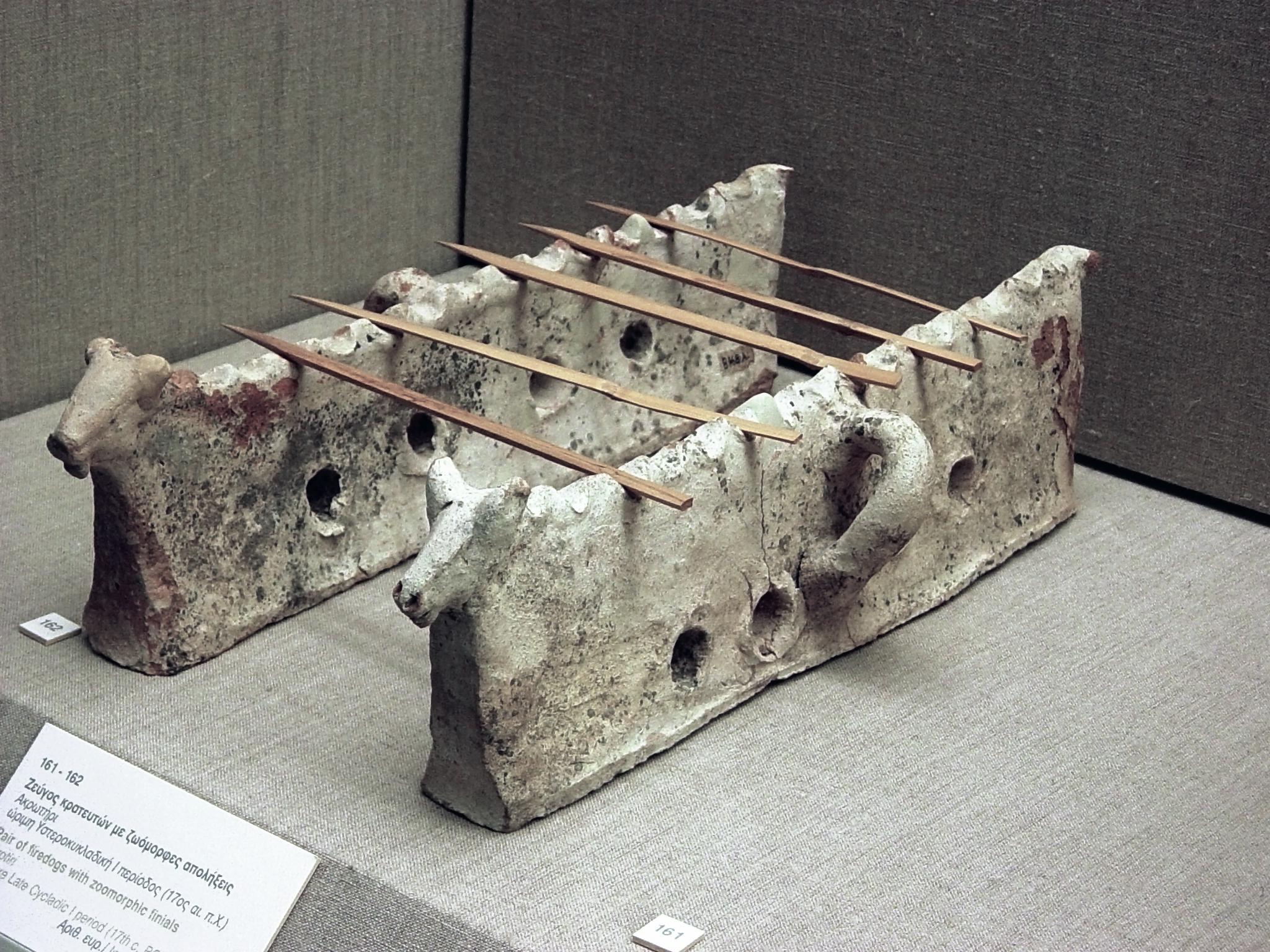 Stone cooking supports used to grill skewers of meat by Minoans on Santorini, circa 1600 BCE. The line of holes in the base supplied coals with oxygen. Many consider modern "souvlaki" street kebabs a direct descendant of this portable food system. Museum of Prehistoric Thera, Greece.
Stone cooking supports used to grill skewers of meat by Minoans on Santorini, circa 1600 BCE. The line of holes in the base supplied coals with oxygen. Many consider modern "souvlaki" street kebabs a direct descendant of this portable food system. Museum of Prehistoric Thera, Greece. -
3.
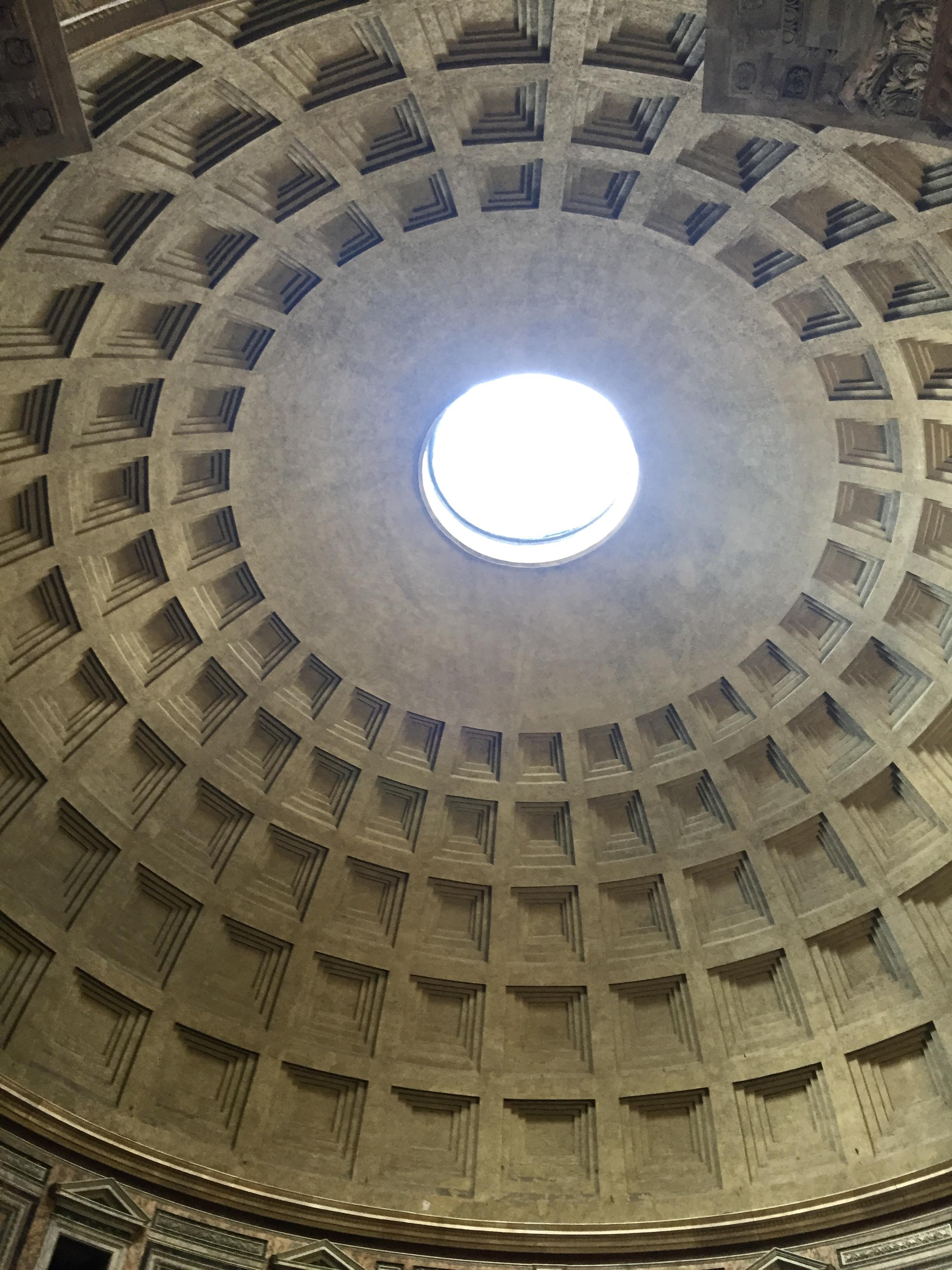 The Oculus of the Roman Pantheon is the building's source of light and ventilation. It may have also been intended to complement ceremonies, overwhelm the senses, and reduce structural pressure. 22 holes, spread across a sloped floor, still drain the rainwater. 2nd century CE. Rome, Italy.
The Oculus of the Roman Pantheon is the building's source of light and ventilation. It may have also been intended to complement ceremonies, overwhelm the senses, and reduce structural pressure. 22 holes, spread across a sloped floor, still drain the rainwater. 2nd century CE. Rome, Italy. -
4.
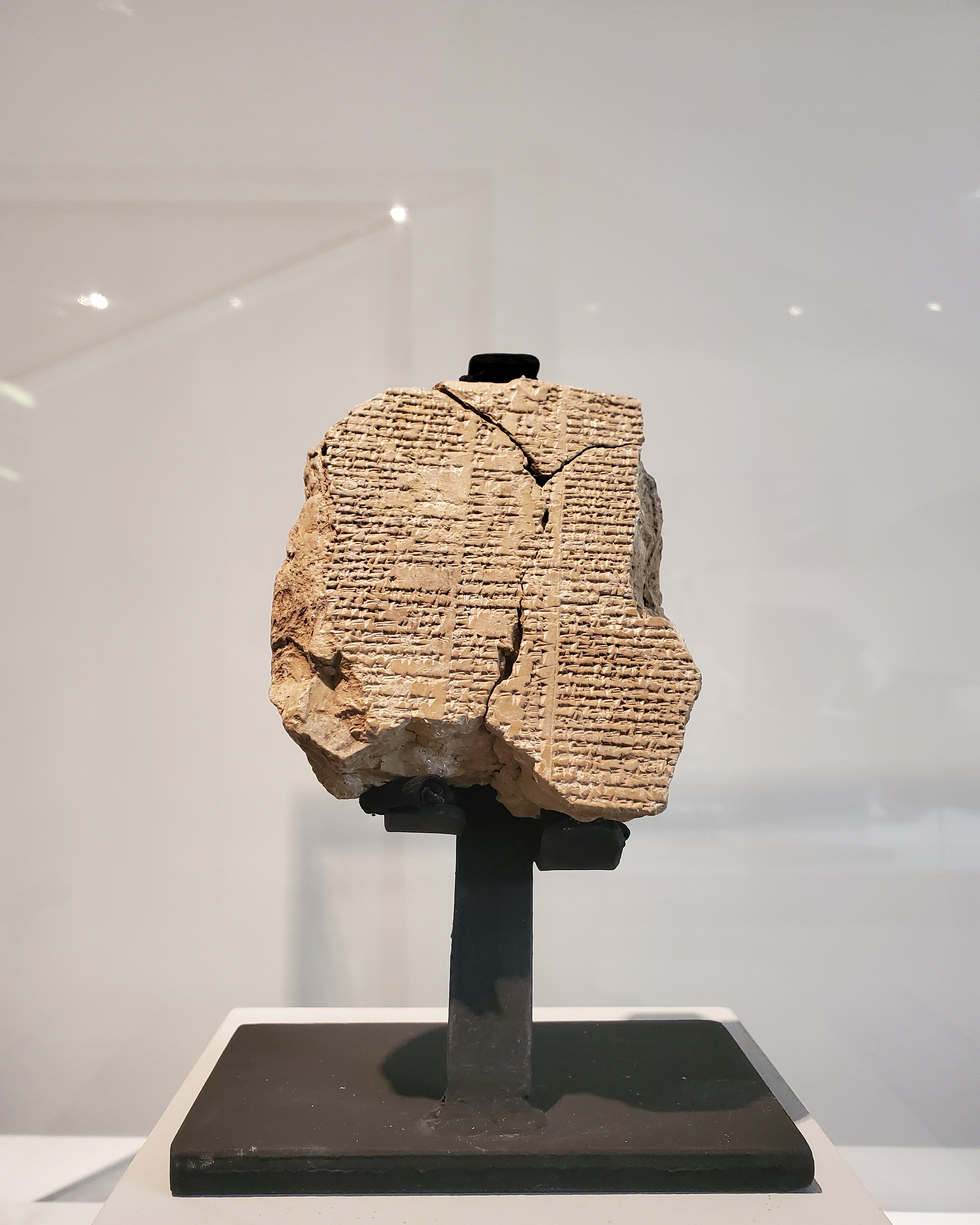 The Epic of Gilgamesh: Considered the oldest piece of literature known to humanity. This is an original tablet housed the in Slemani Museum in Iraq and is over 4,000 years old.
The Epic of Gilgamesh: Considered the oldest piece of literature known to humanity. This is an original tablet housed the in Slemani Museum in Iraq and is over 4,000 years old. -
5.
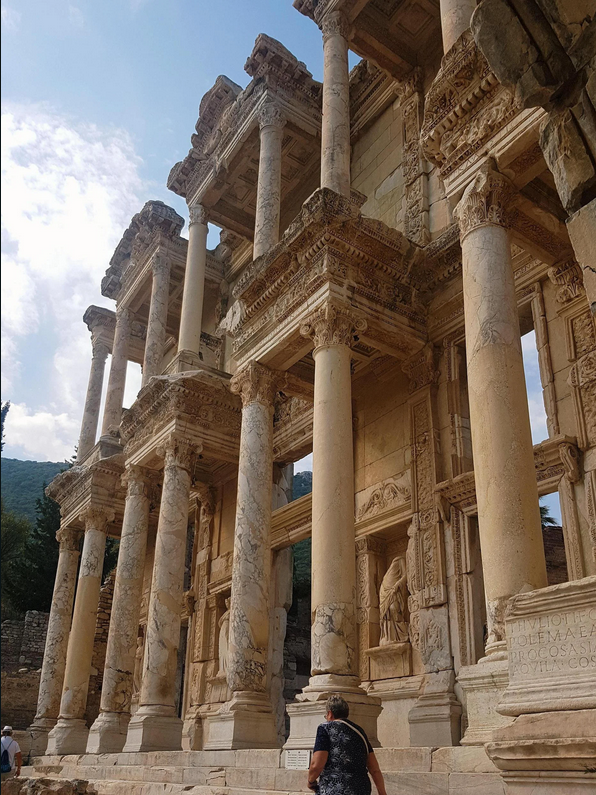 The Library of Celsus was the third-largest library in the Roman world behind only Alexandria and Pergamum, believed to have held around twelve thousand scrolls. It was built in 117 A.D. as a monumental tomb for Gaius Julius Celsus Polemaeanus, the governor of the province of Asia.
The Library of Celsus was the third-largest library in the Roman world behind only Alexandria and Pergamum, believed to have held around twelve thousand scrolls. It was built in 117 A.D. as a monumental tomb for Gaius Julius Celsus Polemaeanus, the governor of the province of Asia. -
6.
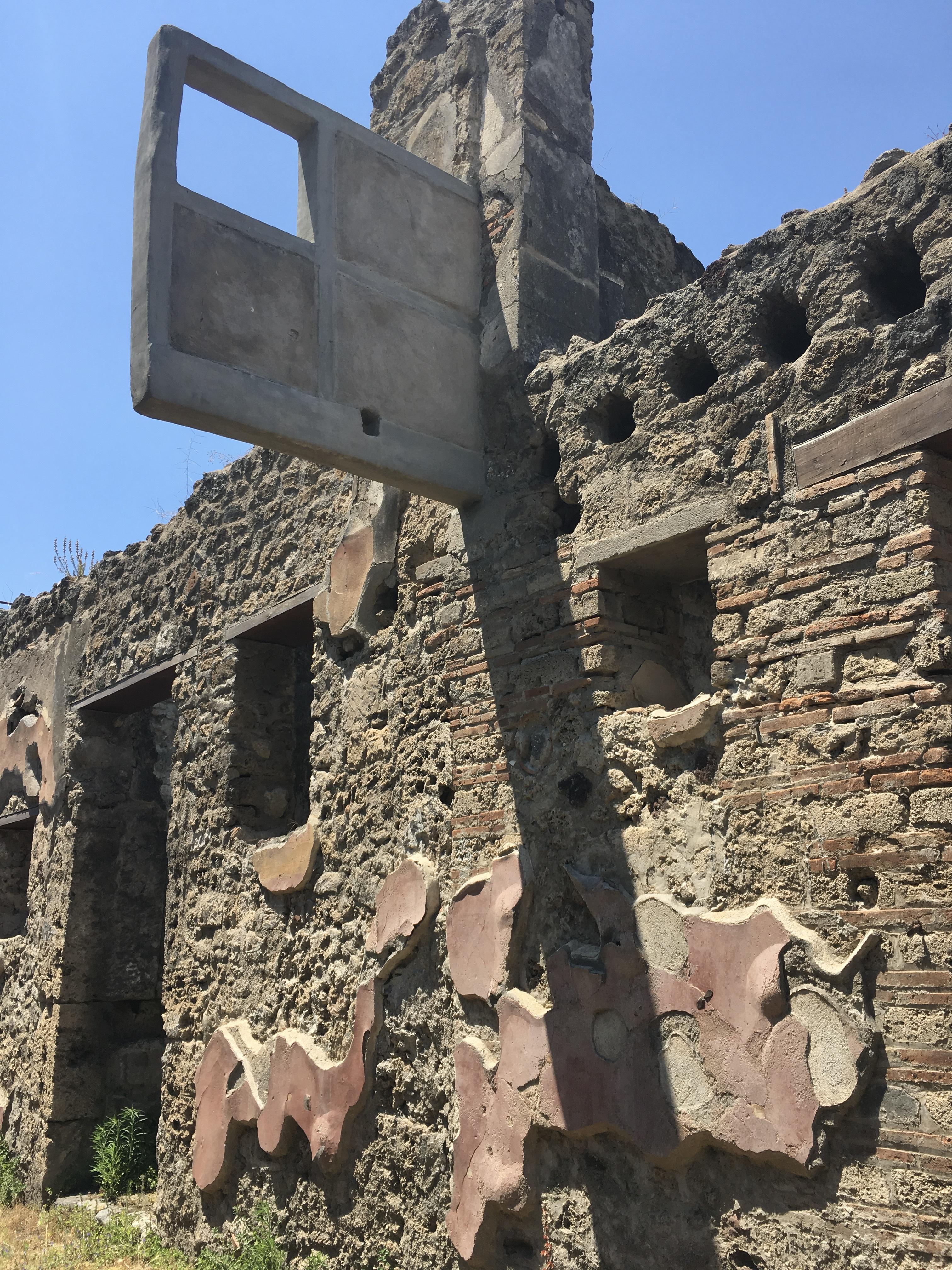 Roman "hanging balcony" partially preserved above the entrance of a 1st century CE tavern. The holes at right once housed wooden support beams. Pompeii, Italy.
Roman "hanging balcony" partially preserved above the entrance of a 1st century CE tavern. The holes at right once housed wooden support beams. Pompeii, Italy. -
7.
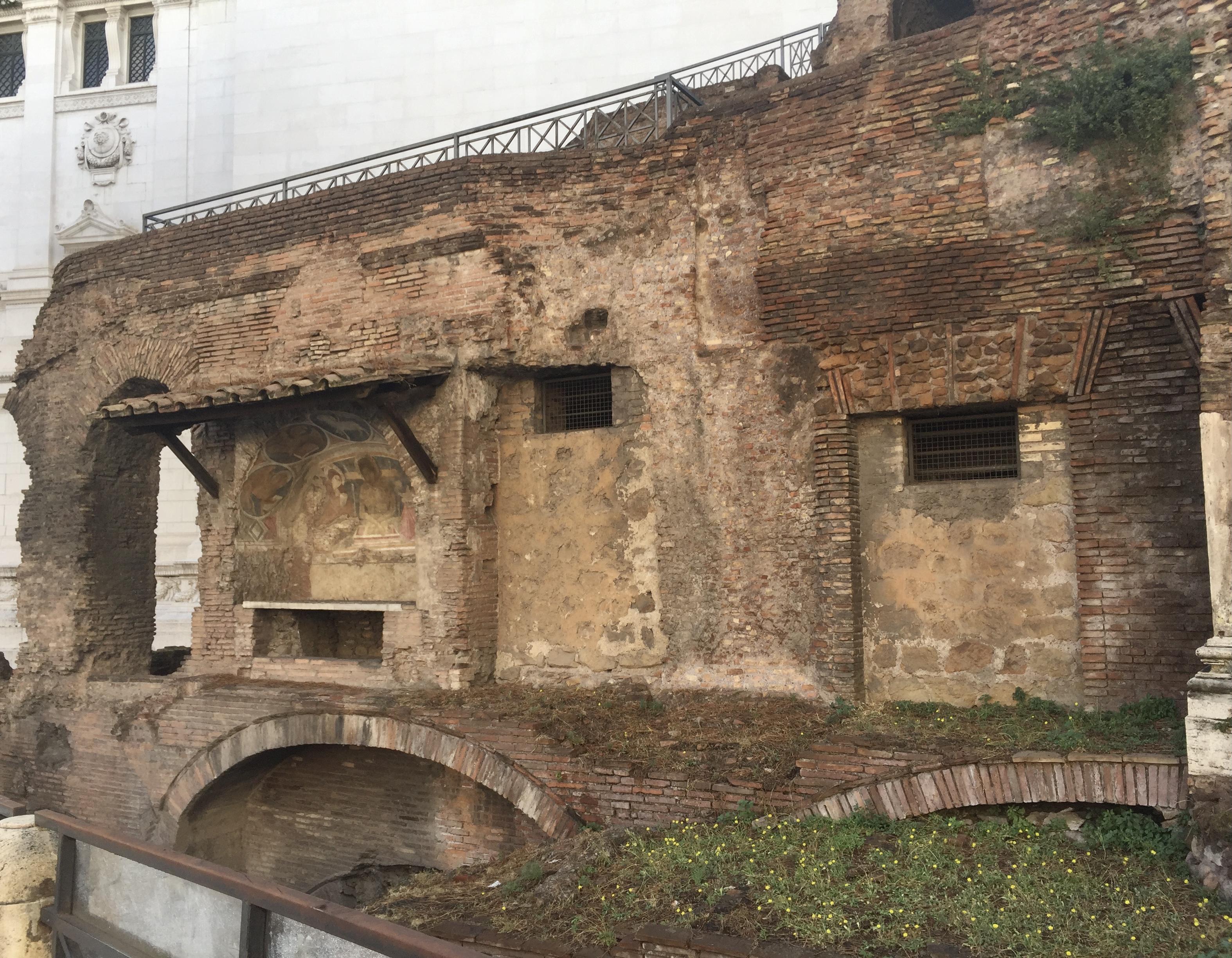 This space contained Roman shopfronts, while doubling as the ground floor of a five-story apartment complex with the capacity for 380 tenants. Although built circa 100 CE, it was spared medieval destruction when incorporated into the church of San Biagio de Mercato in the 11th century. Rome, Italy.
This space contained Roman shopfronts, while doubling as the ground floor of a five-story apartment complex with the capacity for 380 tenants. Although built circa 100 CE, it was spared medieval destruction when incorporated into the church of San Biagio de Mercato in the 11th century. Rome, Italy. -
8.
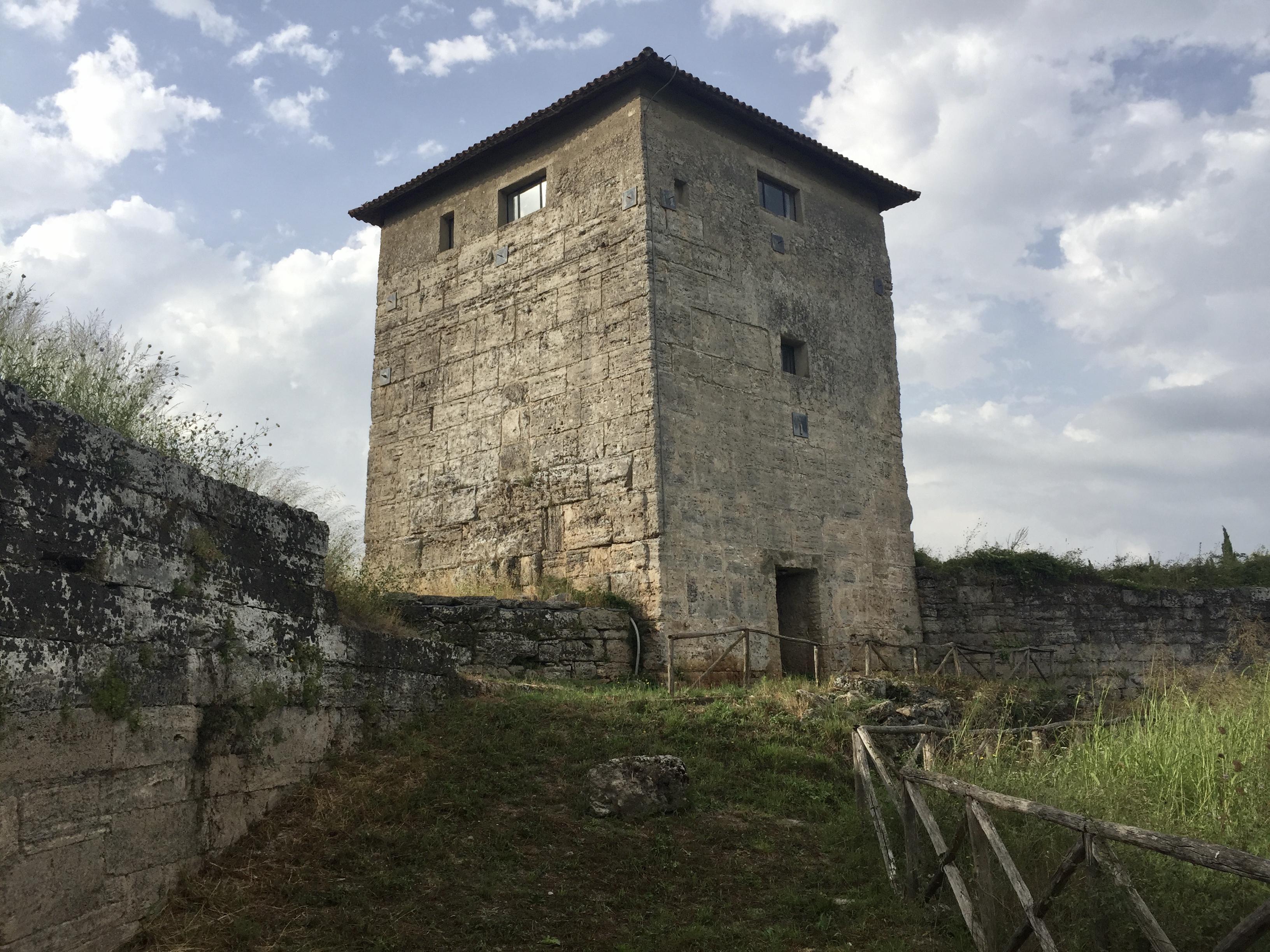 This Roman watchtower forms part of the ancient limestone fortifications which enclose the site of Paestum. The 4,750 meter barrier was reinforced by Greek colonists, Italic conquerors and Roman settlers in three widening layers from 500-100 BCE. Campania, Italy.
This Roman watchtower forms part of the ancient limestone fortifications which enclose the site of Paestum. The 4,750 meter barrier was reinforced by Greek colonists, Italic conquerors and Roman settlers in three widening layers from 500-100 BCE. Campania, Italy. -
9.
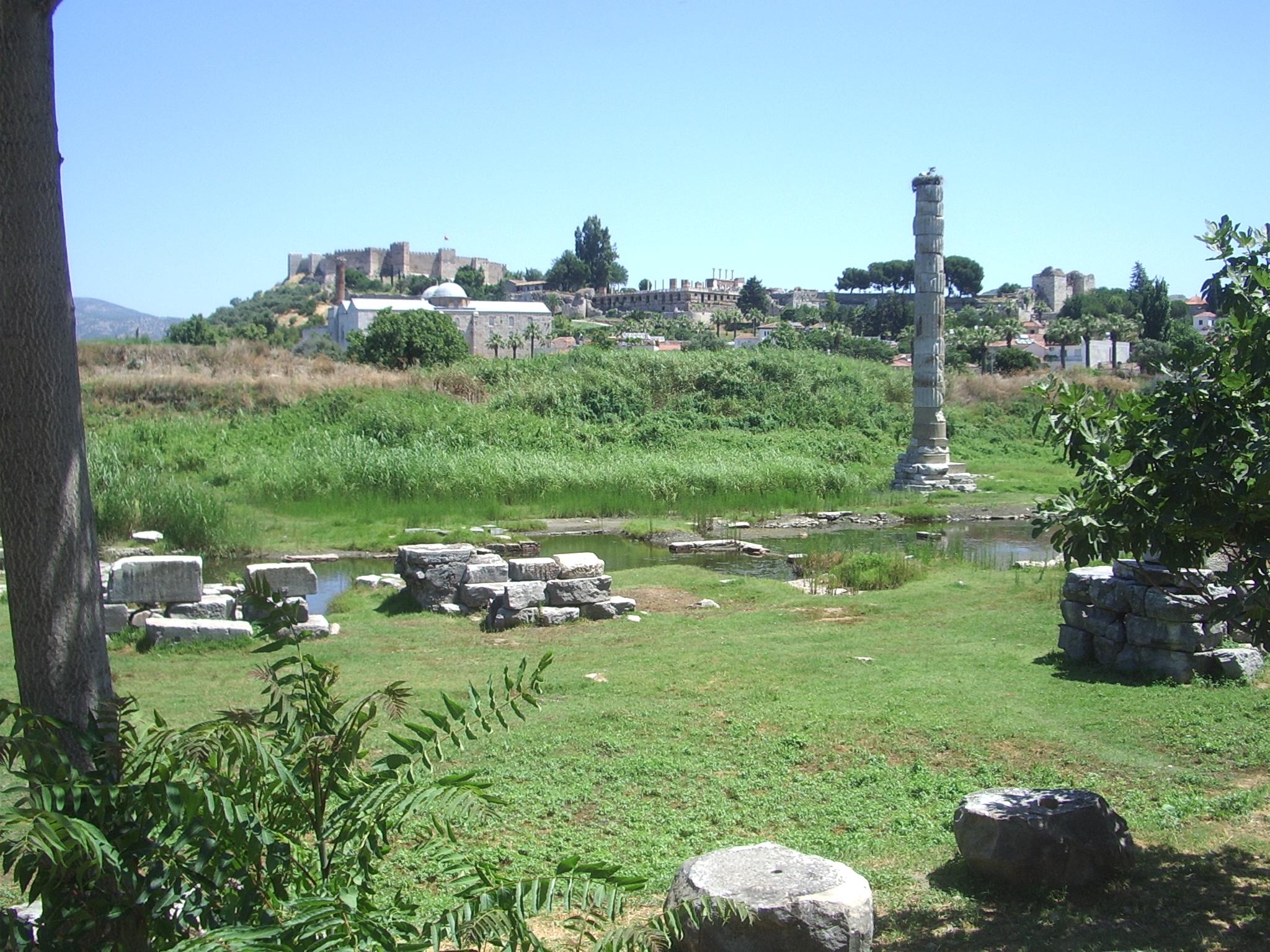 All that's left of The Temple of Artemis, one of the Seven Wonders of the Ancient World. Built 550BCE, rebuilt in 323BCE, destroyed probably in the 5th century CE. View from the garden of a rather nice bar/restaurant across the road. Selcuk, Turkey.
All that's left of The Temple of Artemis, one of the Seven Wonders of the Ancient World. Built 550BCE, rebuilt in 323BCE, destroyed probably in the 5th century CE. View from the garden of a rather nice bar/restaurant across the road. Selcuk, Turkey. -
10.
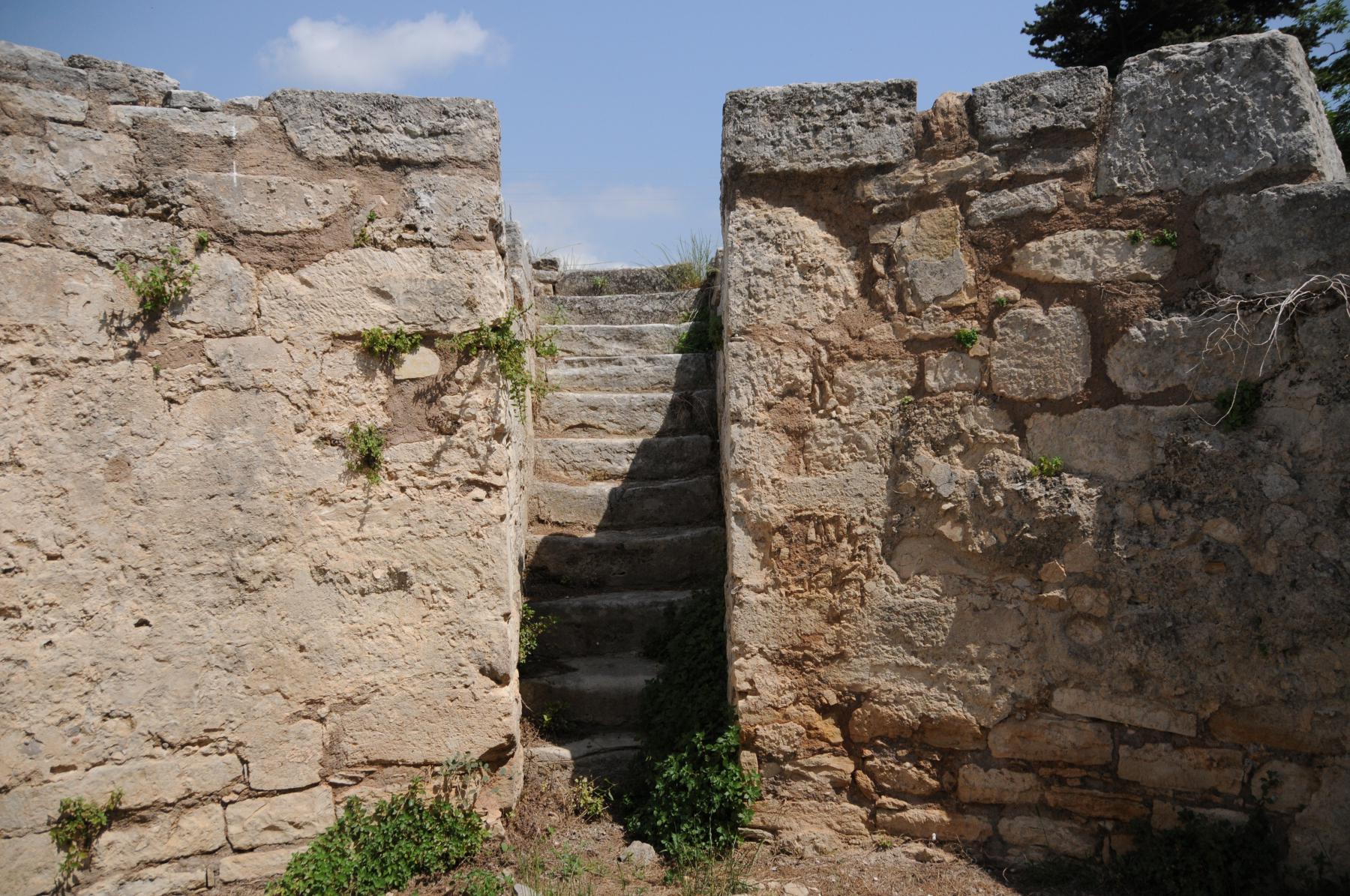 Stairs leading to a Minoan cistern used for the collection of spring water, circa 1330-1200 BCE. An aqueduct moved the supply across three kilometers, with charcoal-filled tubes for activated carbon filtration. The walls were plastered, holding roughly 100 cubic meters of liquid. Tylissos, Crete.
Stairs leading to a Minoan cistern used for the collection of spring water, circa 1330-1200 BCE. An aqueduct moved the supply across three kilometers, with charcoal-filled tubes for activated carbon filtration. The walls were plastered, holding roughly 100 cubic meters of liquid. Tylissos, Crete. -
11.
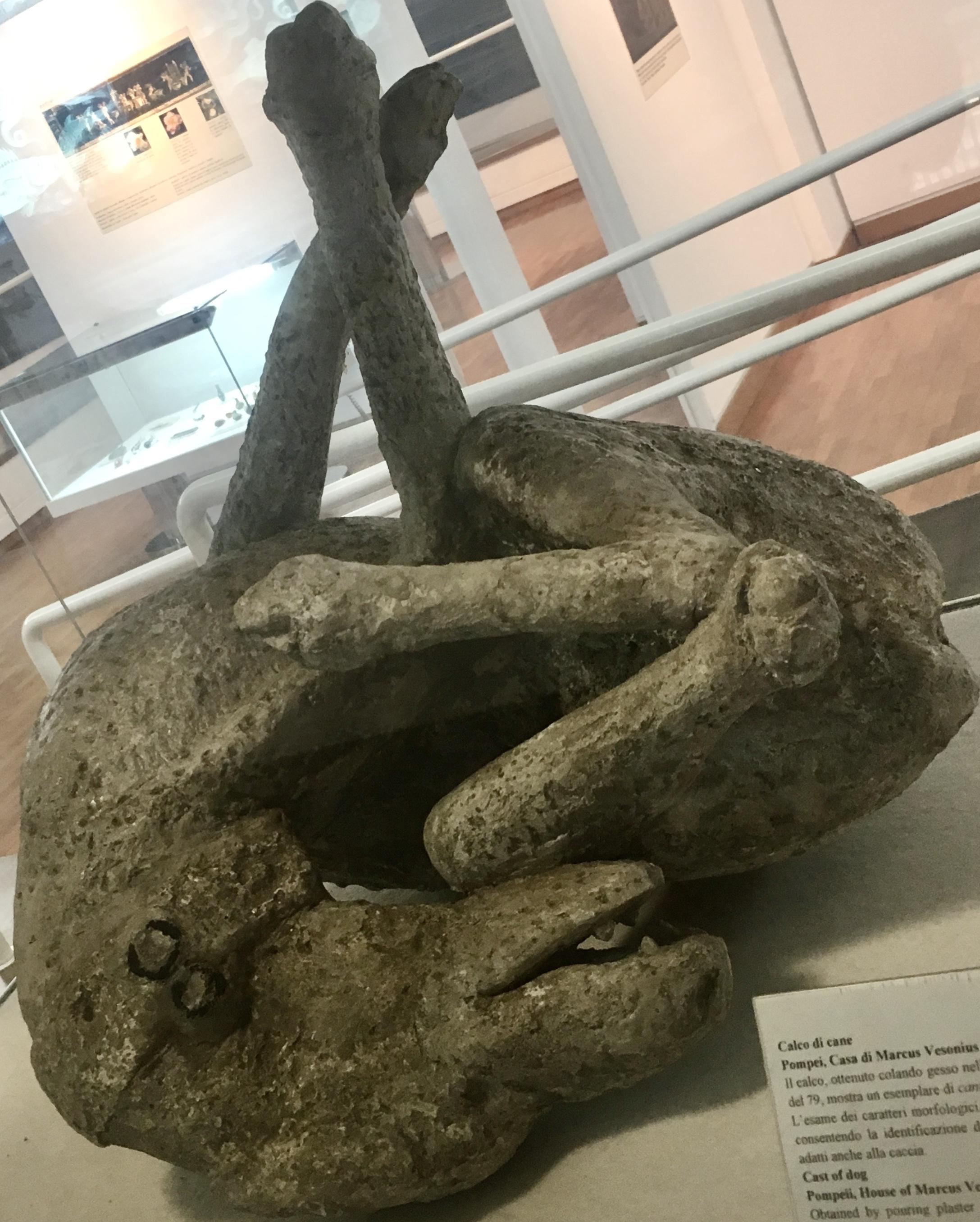 Plaster cast of a Roman watchdog killed by the 79 CE eruption of Mount Vesuvius. He was found tied to the threshold of the House of Marcus Vesonius Primus in Pompeii. The bronze rings of the collar have survived, while impressions of leather remain. Boscoreale Antiquarium, Italy.
Plaster cast of a Roman watchdog killed by the 79 CE eruption of Mount Vesuvius. He was found tied to the threshold of the House of Marcus Vesonius Primus in Pompeii. The bronze rings of the collar have survived, while impressions of leather remain. Boscoreale Antiquarium, Italy. -
12.
 The Temple of Athena, built by Greek colonists in southern Italy circa 510 BCE. The Romans continued using the site as a sanctuary for Minerva. It later became a church; three Christians are buried under the south porch. All 34 Doric columns have survived. Paestum Archaeological Park, Campania.
The Temple of Athena, built by Greek colonists in southern Italy circa 510 BCE. The Romans continued using the site as a sanctuary for Minerva. It later became a church; three Christians are buried under the south porch. All 34 Doric columns have survived. Paestum Archaeological Park, Campania. -
13.
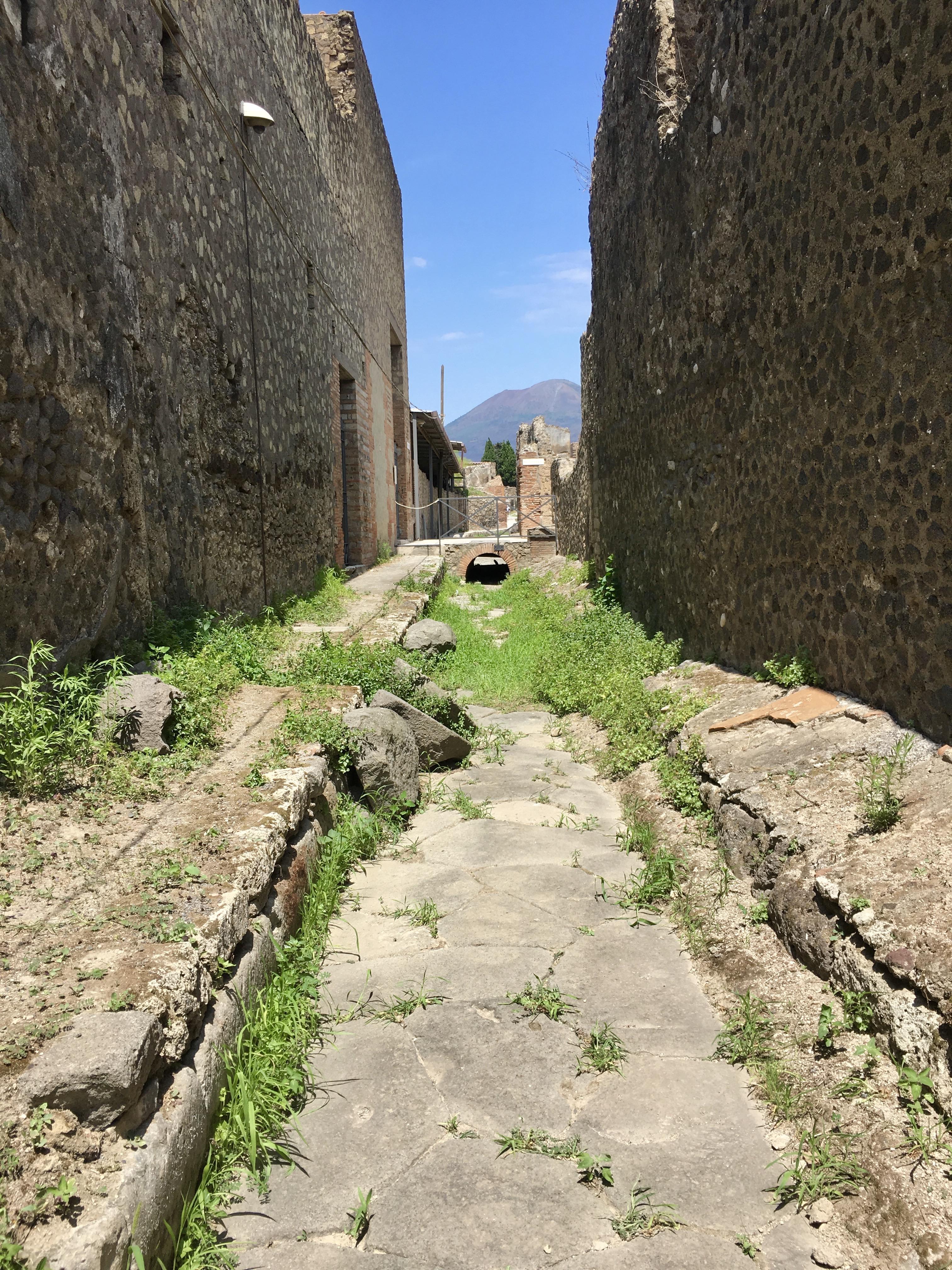 View of Pompeii's Alley of the Pharmacist, running here between two massive Roman domiciles. Vesuvius looms beyond the road drain. 1st century CE. Campania, Italy.
View of Pompeii's Alley of the Pharmacist, running here between two massive Roman domiciles. Vesuvius looms beyond the road drain. 1st century CE. Campania, Italy. -
14.
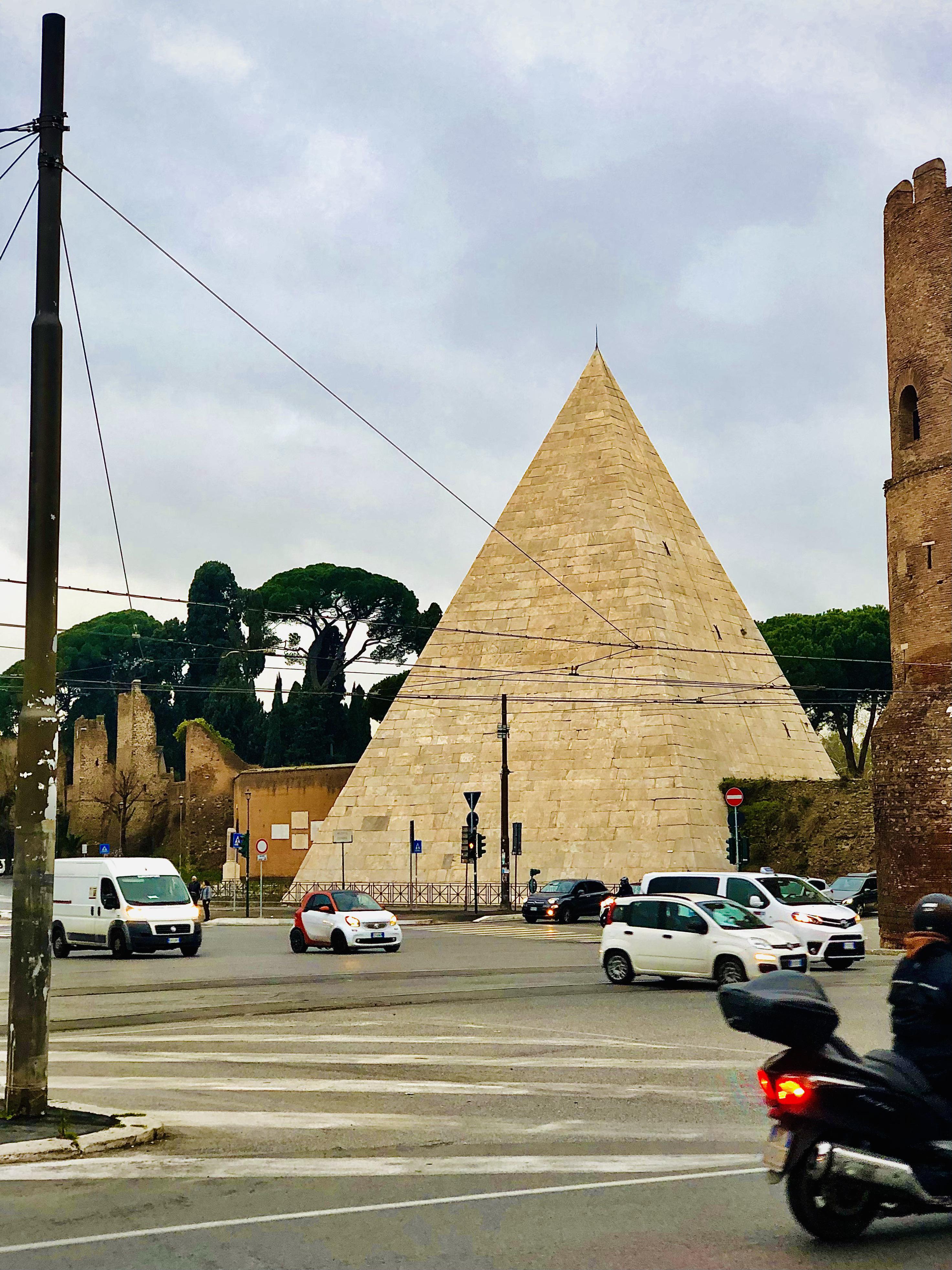 Pyramid of Cestius, built as a tomb for the Roman preator Gaius Cestius ca. 12 BC. Later incorporated into the Aurelian Walls, as a triangular bastion. Rome, Italy
Pyramid of Cestius, built as a tomb for the Roman preator Gaius Cestius ca. 12 BC. Later incorporated into the Aurelian Walls, as a triangular bastion. Rome, Italy -
15.
 This pool was the centerpiece of a 27,000 square-foot Roman villa, built around the 3rd century CE in Paestum, Italy.
This pool was the centerpiece of a 27,000 square-foot Roman villa, built around the 3rd century CE in Paestum, Italy. -
16.
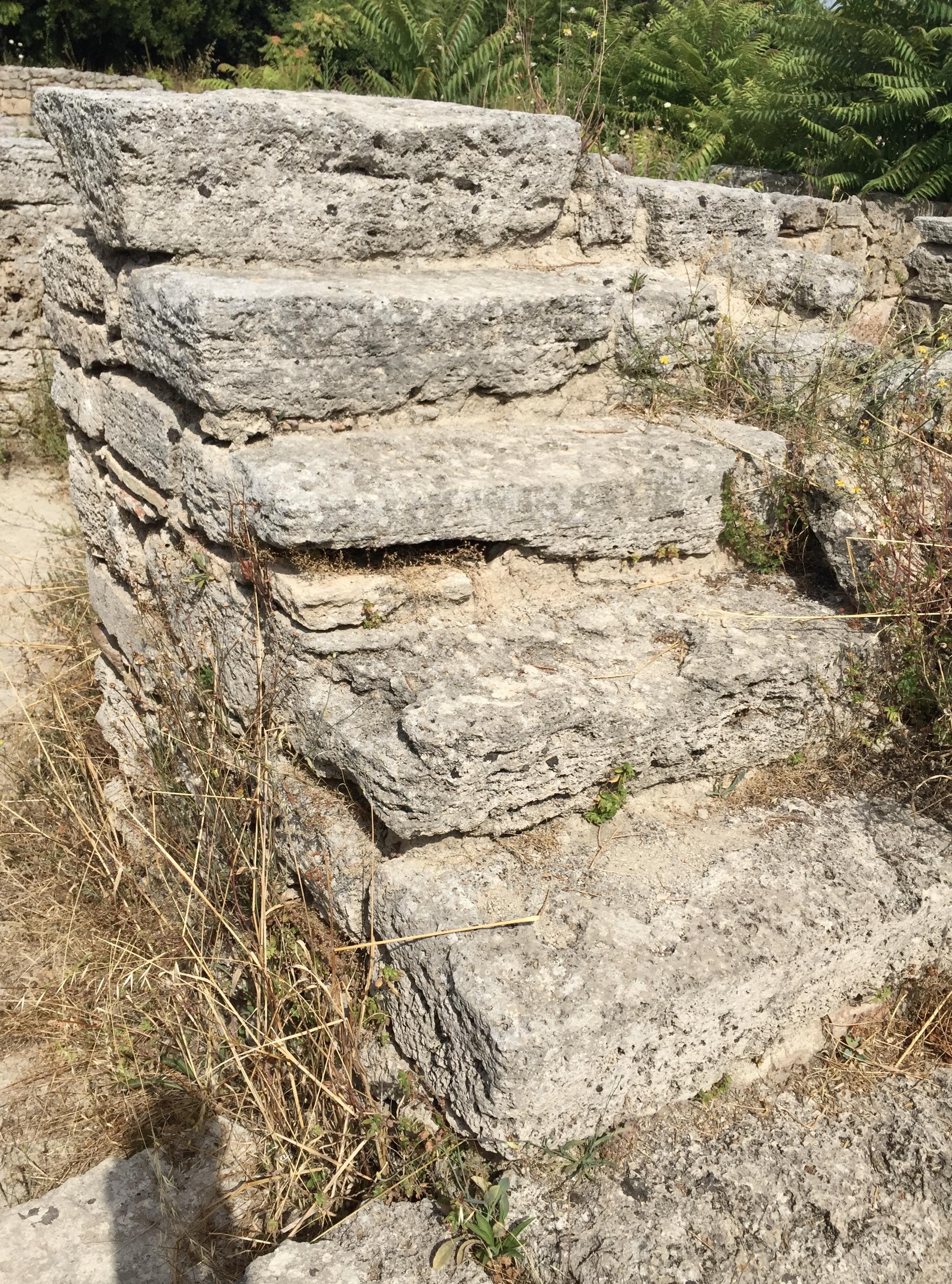 Ancient Roman staircase inside an upper-middle class residence at Paestum, circa 3rd century CE. Campania, Italy.
Ancient Roman staircase inside an upper-middle class residence at Paestum, circa 3rd century CE. Campania, Italy. -
17.
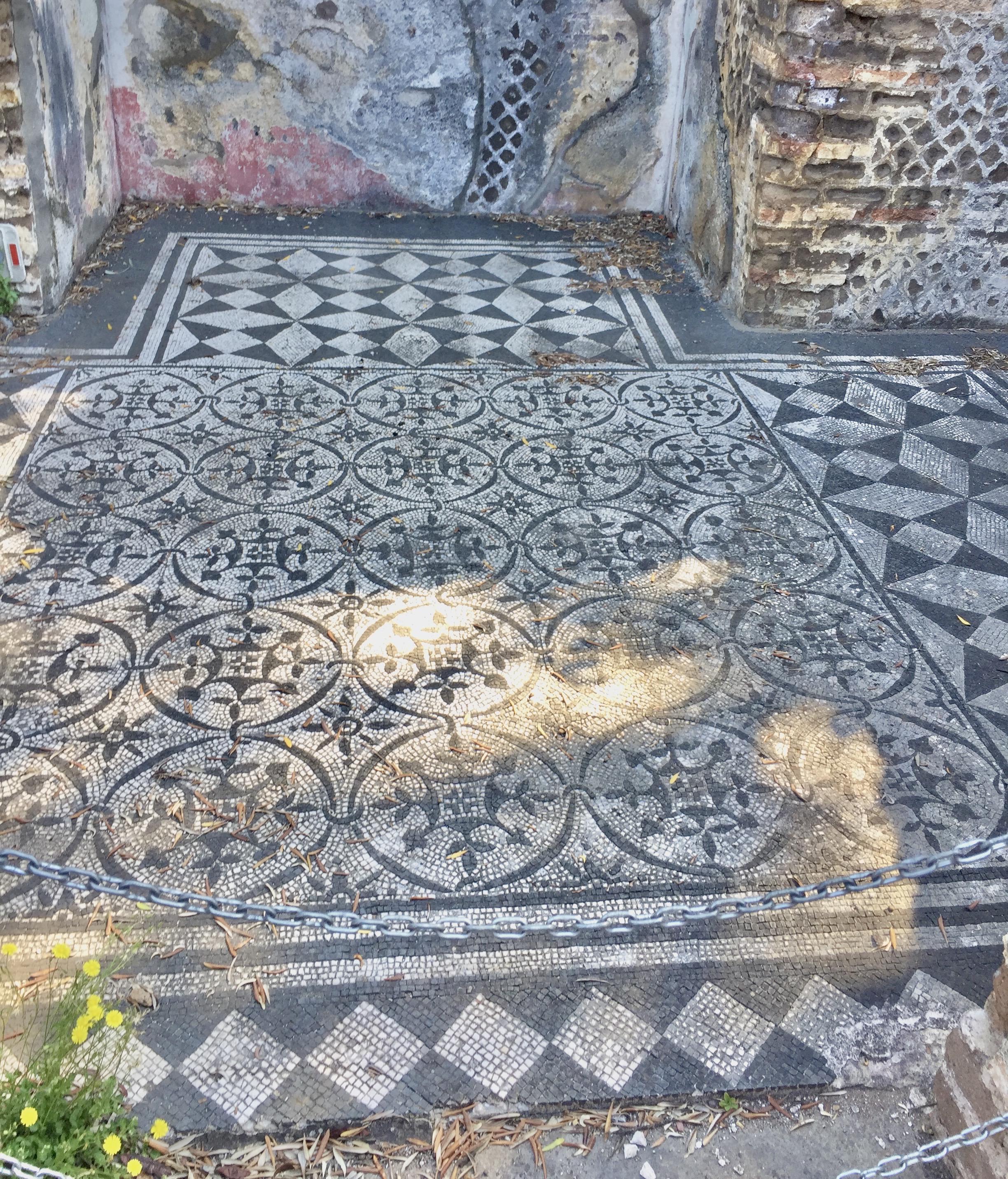 Black-and-white Roman mosaic flooring from the Hospitalia, a guesthouse which likely served as the barracks of the Praetorian Guard at Hadrian's Villa in Tivoli, Italy, circa 117-138 CE.
Black-and-white Roman mosaic flooring from the Hospitalia, a guesthouse which likely served as the barracks of the Praetorian Guard at Hadrian's Villa in Tivoli, Italy, circa 117-138 CE. -
18.
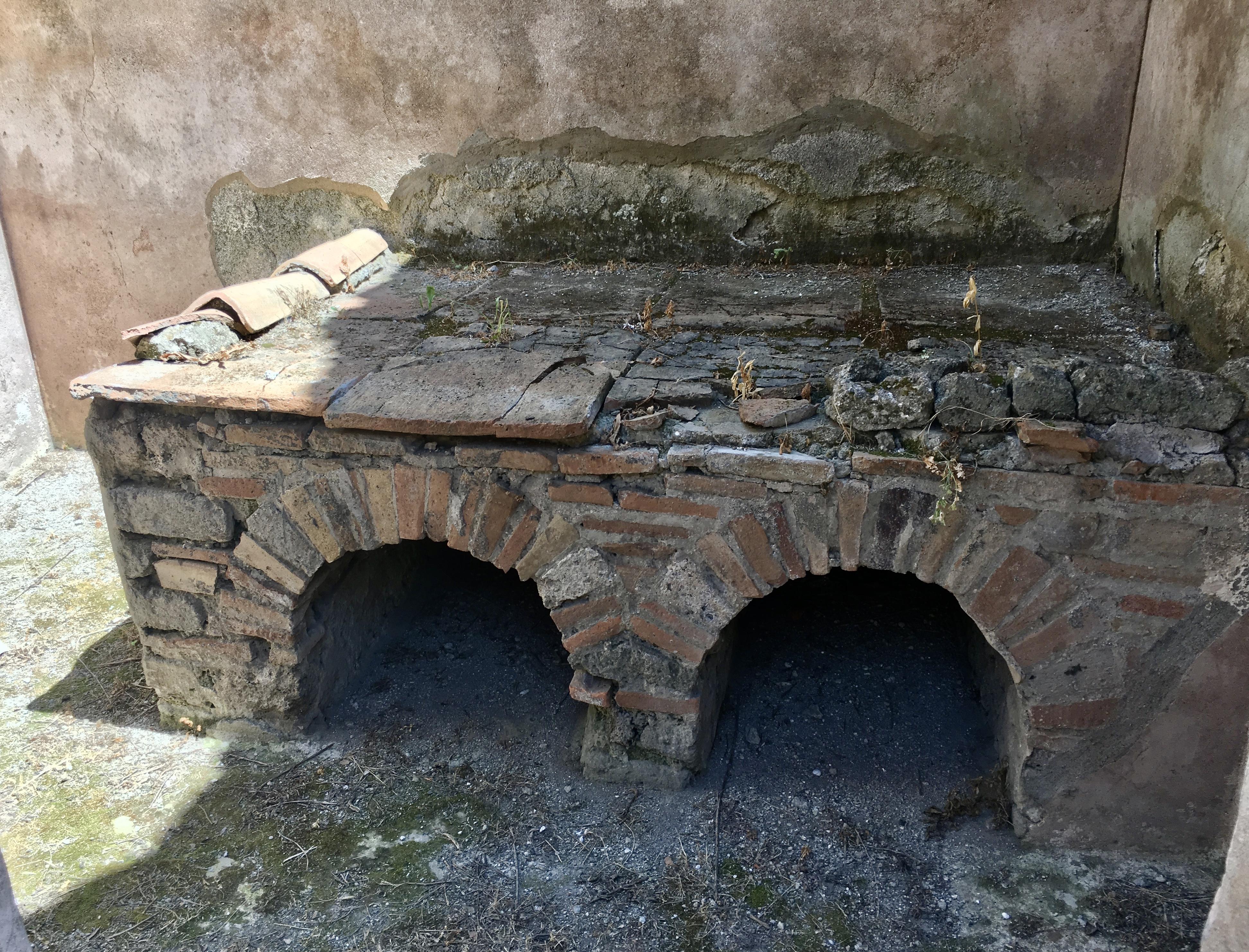 Ancient Roman kitchen hearth from a 13-room, 4,200 square-foot home in Regio XI of Pompeii, Italy, circa 1st century CE.
Ancient Roman kitchen hearth from a 13-room, 4,200 square-foot home in Regio XI of Pompeii, Italy, circa 1st century CE. -
19.
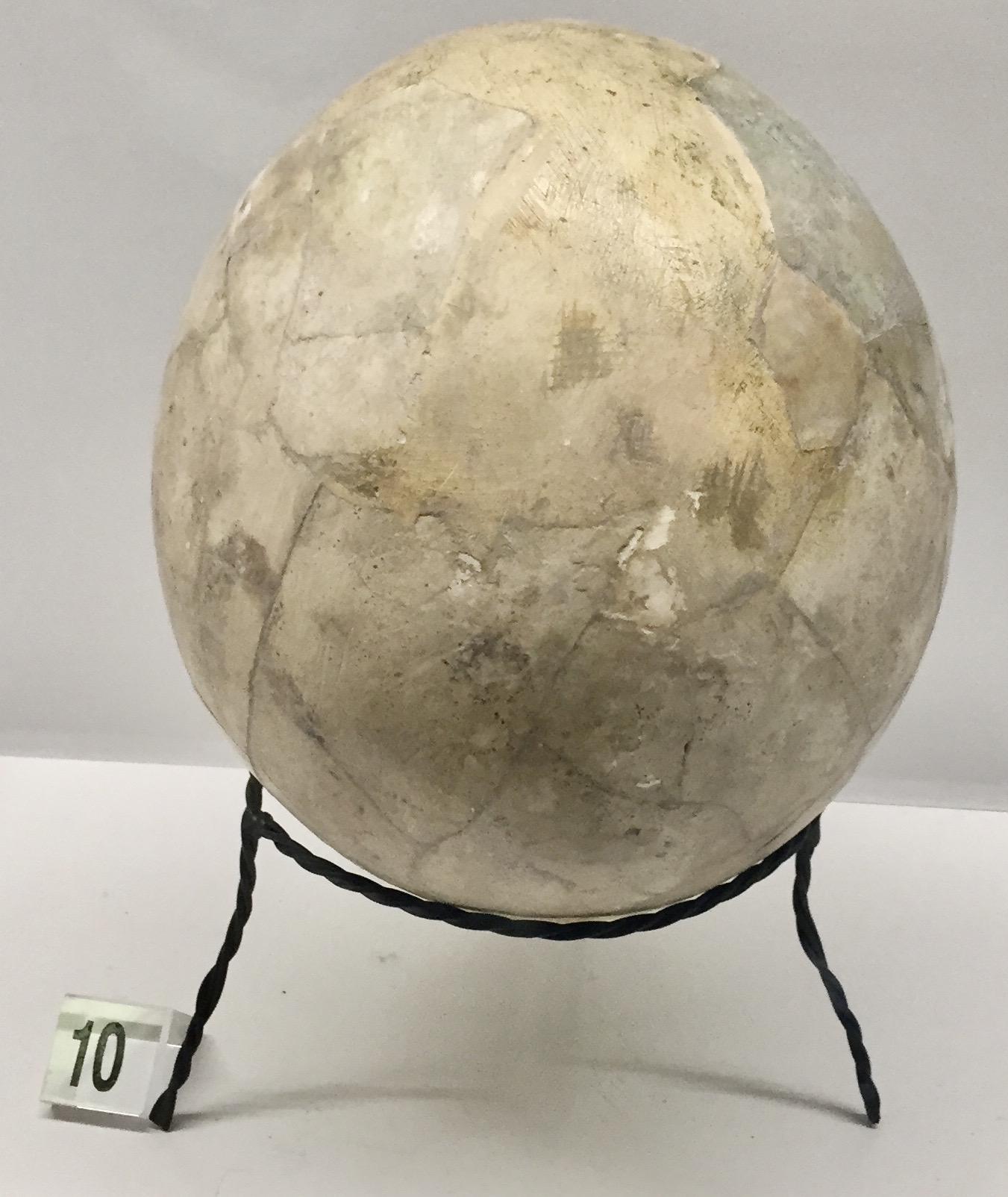 This ostrich egg was fashioned into a container and deposited as a grave good at the Etruscan necropolis in Cerveteri, Italy, circa 690-650 BCE. It was imported from the Upper Valley of the Nile River by Phoenician traders. National Etruscan Museum of the Villa Giulia. Rome, Italy.
This ostrich egg was fashioned into a container and deposited as a grave good at the Etruscan necropolis in Cerveteri, Italy, circa 690-650 BCE. It was imported from the Upper Valley of the Nile River by Phoenician traders. National Etruscan Museum of the Villa Giulia. Rome, Italy. -
20.
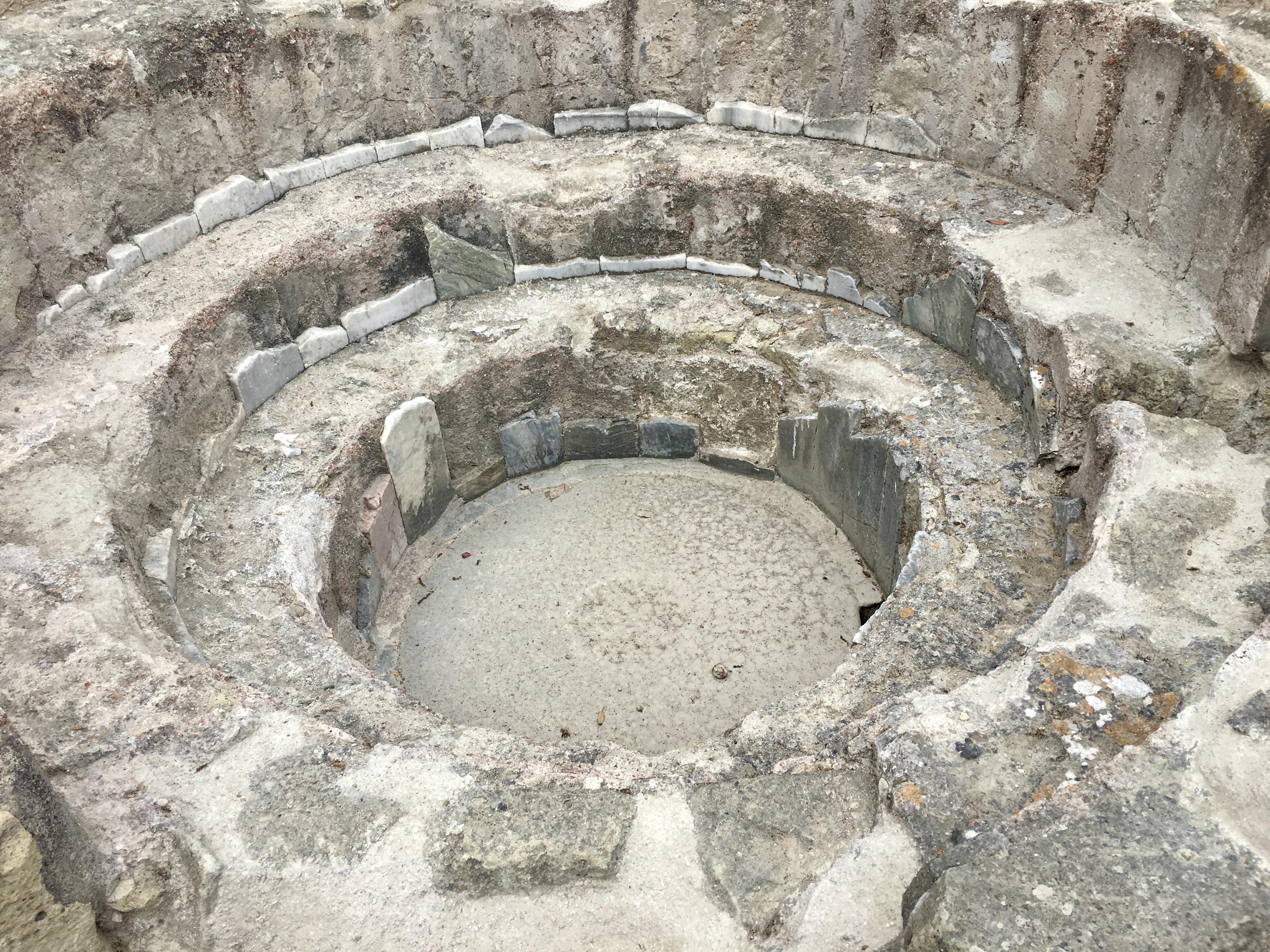 This baptismal fountain was installed by Byzantine settlers circa 500 CE, transforming a Greco-Roman "Temple of Zeus", built 1,000 years earlier, into a Paleochristian basilica. Numerous burials were made in the Archaic sanctuary foundations during Late Antiquity. Cumae Acropolis. Campania, Italy.
This baptismal fountain was installed by Byzantine settlers circa 500 CE, transforming a Greco-Roman "Temple of Zeus", built 1,000 years earlier, into a Paleochristian basilica. Numerous burials were made in the Archaic sanctuary foundations during Late Antiquity. Cumae Acropolis. Campania, Italy. -
21.
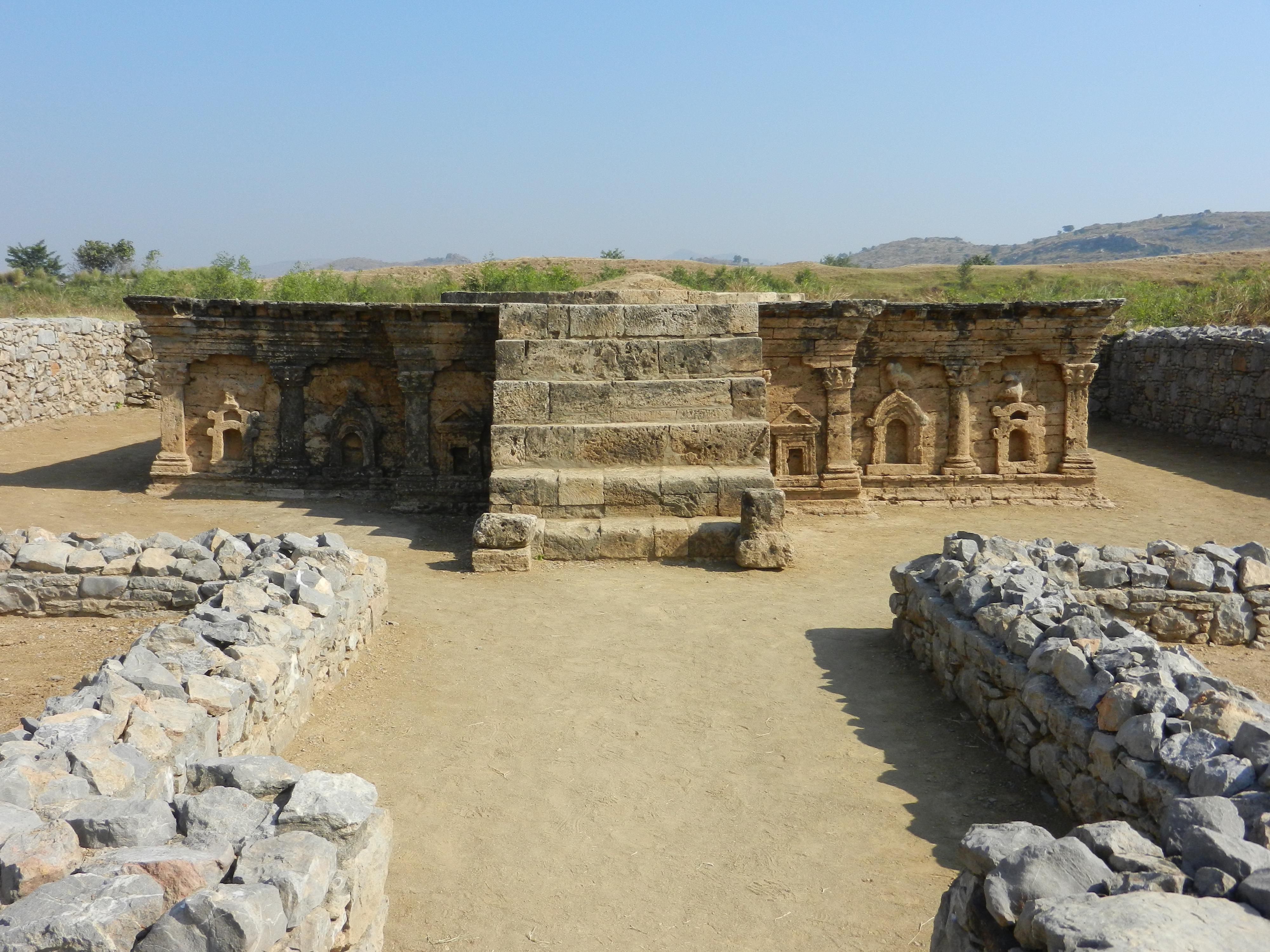 The Double-Headed Eagle Stupa was a public shrine which housed religious relics during the Indo-Scythian stage at Sirkap, showcasing Buddhist, Hellenistic, and even Babylonian artistic influences in South Asia. The settlement was previously Greco-Bactrian. 1st century BCE. Taxila, Pakistan.
The Double-Headed Eagle Stupa was a public shrine which housed religious relics during the Indo-Scythian stage at Sirkap, showcasing Buddhist, Hellenistic, and even Babylonian artistic influences in South Asia. The settlement was previously Greco-Bactrian. 1st century BCE. Taxila, Pakistan. -
22.
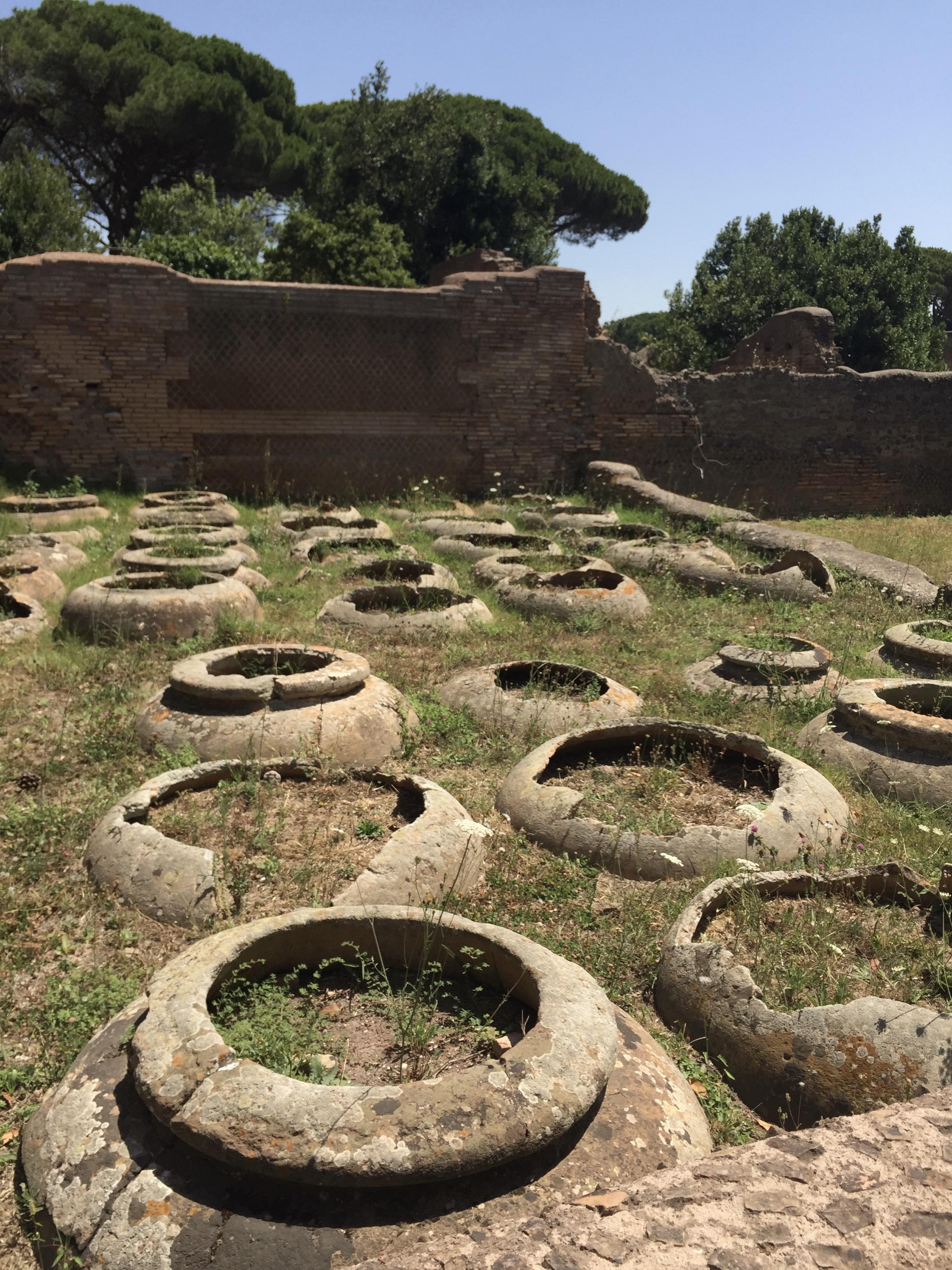 With 35 large jars (dolia) buried inside the floor, this Roman building likely served as a repository for olive oil or wine. It was first built around 130-145 CE, but remained in use until the 5th century. Ostia, Italy.
With 35 large jars (dolia) buried inside the floor, this Roman building likely served as a repository for olive oil or wine. It was first built around 130-145 CE, but remained in use until the 5th century. Ostia, Italy. -
23.
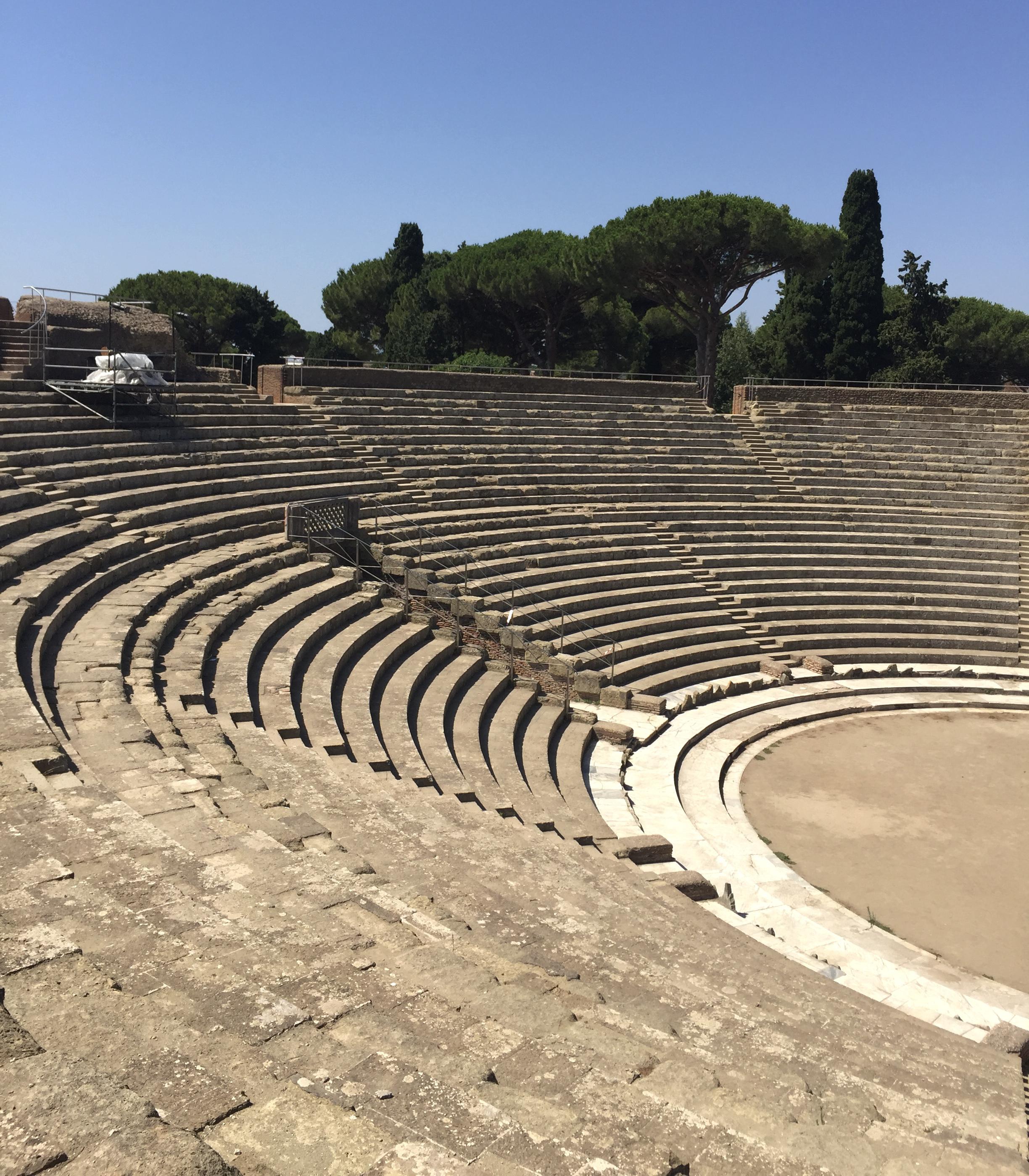 The Ostia Theater could contain an audience of 4,000 Romans. First built with stone masonry piers by Agrippa circa 27-12 BCE, it was reconstructed with brick-faced walls under Commodus and Septimius Severus, 192-196 CE. Sixteen shops existed inside the façade, located behind the seats. Lazio, Italy.
The Ostia Theater could contain an audience of 4,000 Romans. First built with stone masonry piers by Agrippa circa 27-12 BCE, it was reconstructed with brick-faced walls under Commodus and Septimius Severus, 192-196 CE. Sixteen shops existed inside the façade, located behind the seats. Lazio, Italy. -
24.
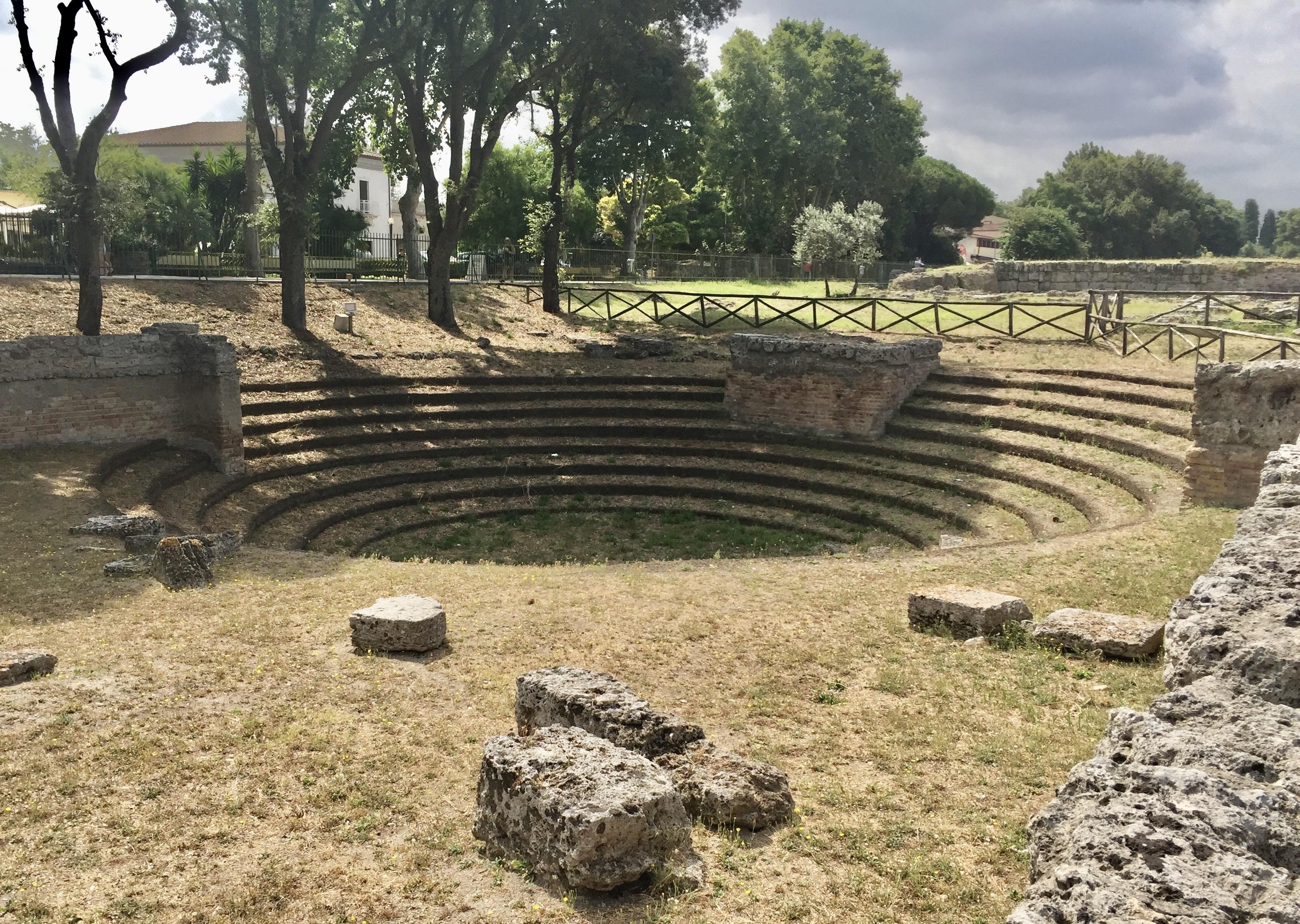 Unroofed, circular meeting place for a civic deliberative body at the agora of Paestum, a Greek colony in southern Italy, c.450 BCE. It may be an ekklesiasterion, or popular assembly. The space may instead be a bouleuterion, the lot-selected executive council, as it only held 500-600 people.
Unroofed, circular meeting place for a civic deliberative body at the agora of Paestum, a Greek colony in southern Italy, c.450 BCE. It may be an ekklesiasterion, or popular assembly. The space may instead be a bouleuterion, the lot-selected executive council, as it only held 500-600 people. -
25.
 Bronze Roman eagle, crafted 100-200 CE, which complemented a sculptural ensemble representative of either Jupiter or an emperor. It probably grasped a globe or thunderbolt in its raised talon. Getty Villa. Pacific Palisades, CA.
Bronze Roman eagle, crafted 100-200 CE, which complemented a sculptural ensemble representative of either Jupiter or an emperor. It probably grasped a globe or thunderbolt in its raised talon. Getty Villa. Pacific Palisades, CA. -
26.
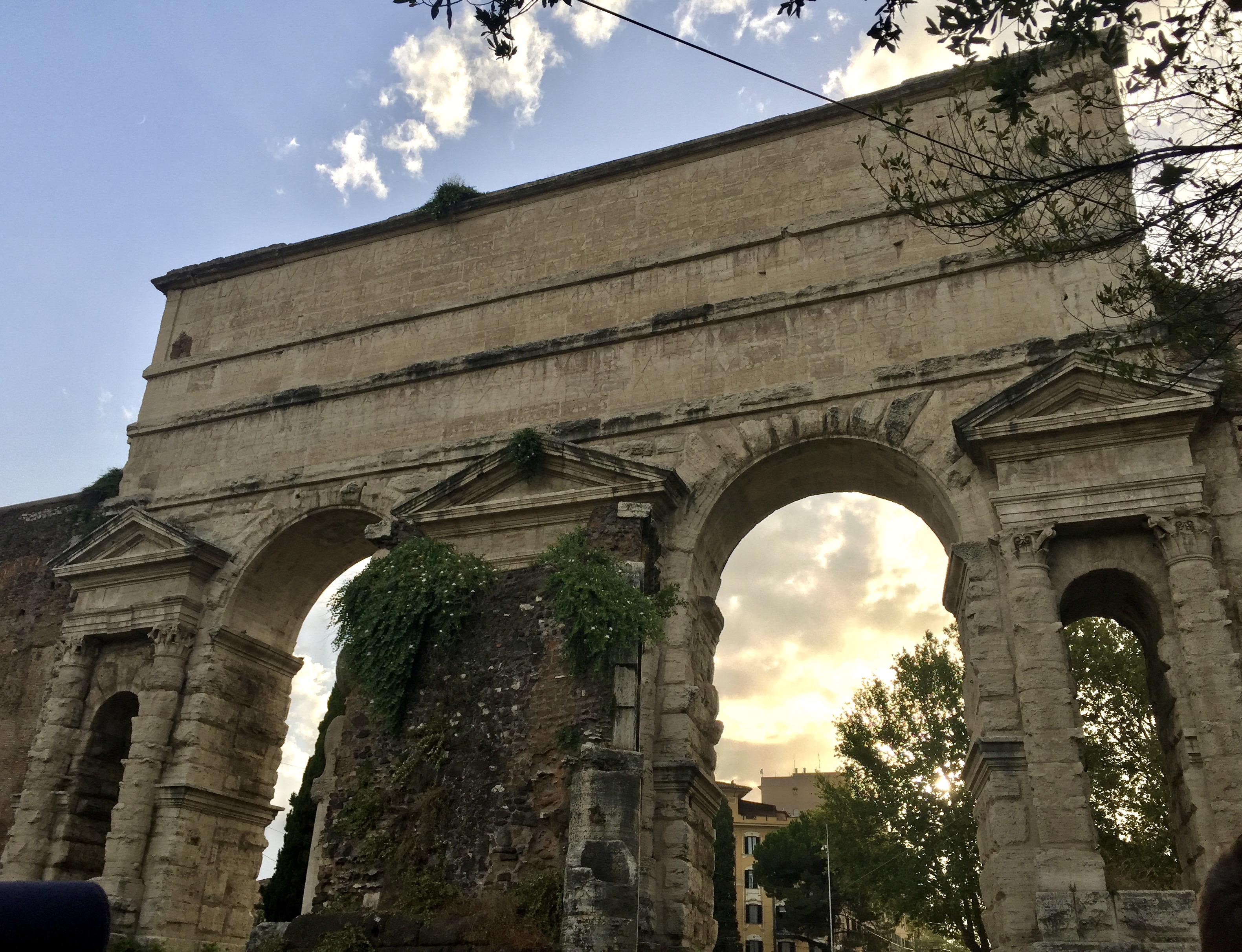 The Emperor Claudius built the Porta Maggiore, a monumental double-arch connecting two Roman aqueducts, on the border of the Esquiline Hill in 52 CE. By 275 CE, the structure was incorporated into the Aurelian Walls, transforming this travertine decoration into a pivotal defense. Rome, Italy.
The Emperor Claudius built the Porta Maggiore, a monumental double-arch connecting two Roman aqueducts, on the border of the Esquiline Hill in 52 CE. By 275 CE, the structure was incorporated into the Aurelian Walls, transforming this travertine decoration into a pivotal defense. Rome, Italy.
There are many fascinating parts of our world that are lost to history, but these images from r/ancientpics give us a look into interesting places and items that were created in the distant past. It's hard not to be in awe of the ingenuity of people from history.
26/26
1/26



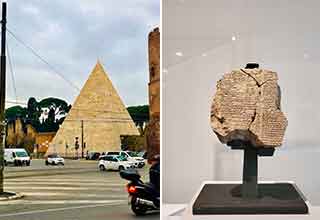

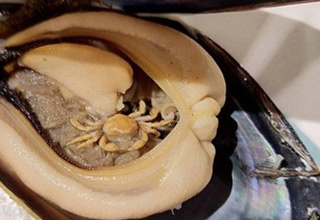



1 Comments